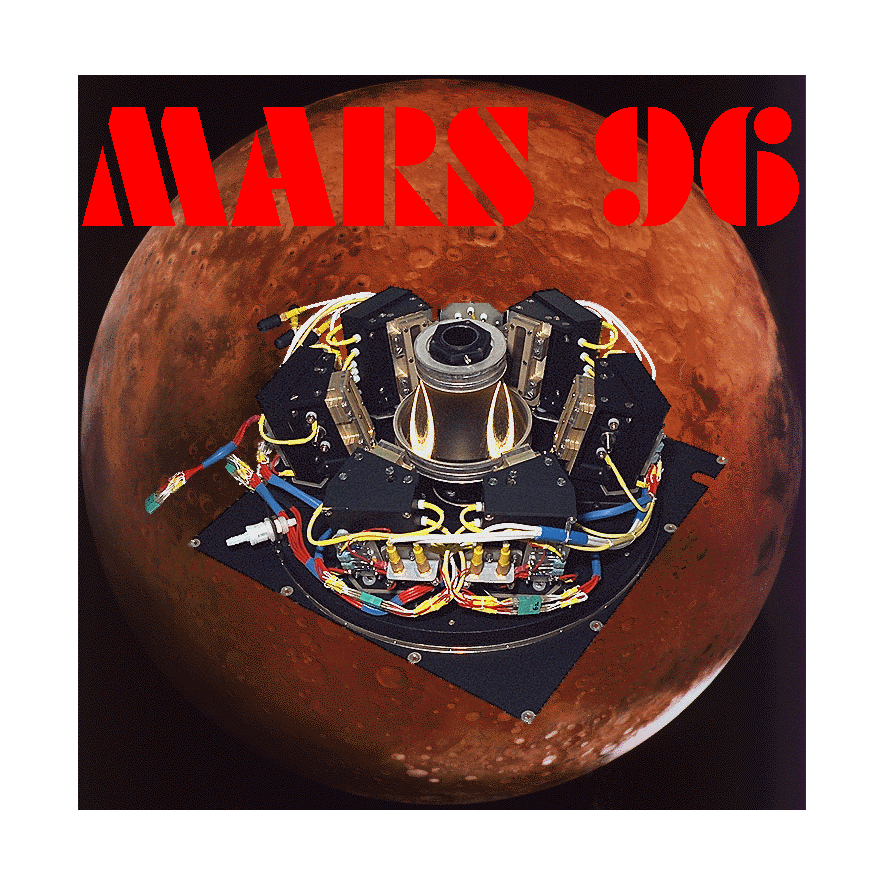Mars 96
The Mars-96 spacecraft was lost on November 17 1996 when the D-2 Block of the launcher failed to ignite for its second planned burn. The Mars-96 craft detached from the D-2 booster, and re-entered the Earth's atmosphere.
The mission
 The objectives of the Russian MARS-96 mission are to study the atmosphere, surface, interior and solar
wind interaction of the planet Mars. This is achieved with a large number of instruments including surface
penetrators and soft landers studying many aspects of the planet.
The objectives of the Russian MARS-96 mission are to study the atmosphere, surface, interior and solar
wind interaction of the planet Mars. This is achieved with a large number of instruments including surface
penetrators and soft landers studying many aspects of the planet.
After a period of uncertainty concerning the situation following the events of August 1991, the Russian Academy of Sciences established that the Mars-94 mission would continue to have the highest priority in their space programme. Due to financial difficulties however the mission will now be launched in late 1996 and hence its new name: Mars-96. Mars-96 will be launched from the Baikonur complex in Kazhakstan aboard a Proton type launcher.
The FONEMA Instrument
The FONEMA (Fast Omni-directional Non-scanning Energy Mass Analyser) instrument is one of a package of instruments included on the orbiter payload to study the solar wind interaction with Mars. MSSL is the PI institute for the FONEMA instrument in collaboration with MFFUK (Czech Republic), who are supplying the High Voltage units and the EGSE, CESR (France) and STIL (Ireland), who are providing the DPU, IKI (Russia) and OKB (Kirghizia).
FONEMA will study the structure, dynamics and origin of the plasma population of near-Mars space by measurements of three dimensional distribution functions of hot ions with a high time resolution in the energy range from 20eV to 8keV. The instrument consists of 36 Thomson parabola energy mass analysers which make measurements within their own solid angle determined by a pair of hyperbolic electrostatic mirrors and a focussing particle collimator system. Within each analyser parallel electrostatic and magnetic fields deflect the incoming ions to produce parabolic images on an MCP/Wedge Strip anode imaging system. Encoding electronics then produce energy spectra for 4 different mass groups from which the onboard software within the Data Processing Unit (DPU) will produce full distributions.
Further Information
Mars 96The Mars-96 home page at IKI may be accessed, as well as a page describing one of the Mars-96 landers, located at the Finnish Meteorological Institute. Information on the Mars-96 Long-Wavelength Radar at the Max-Planck Institut fuer Aeronomie is also available.
The Planet MarsDescriptions of the planet Mars are available at JPL and at the Los Alamos National Laboratory.